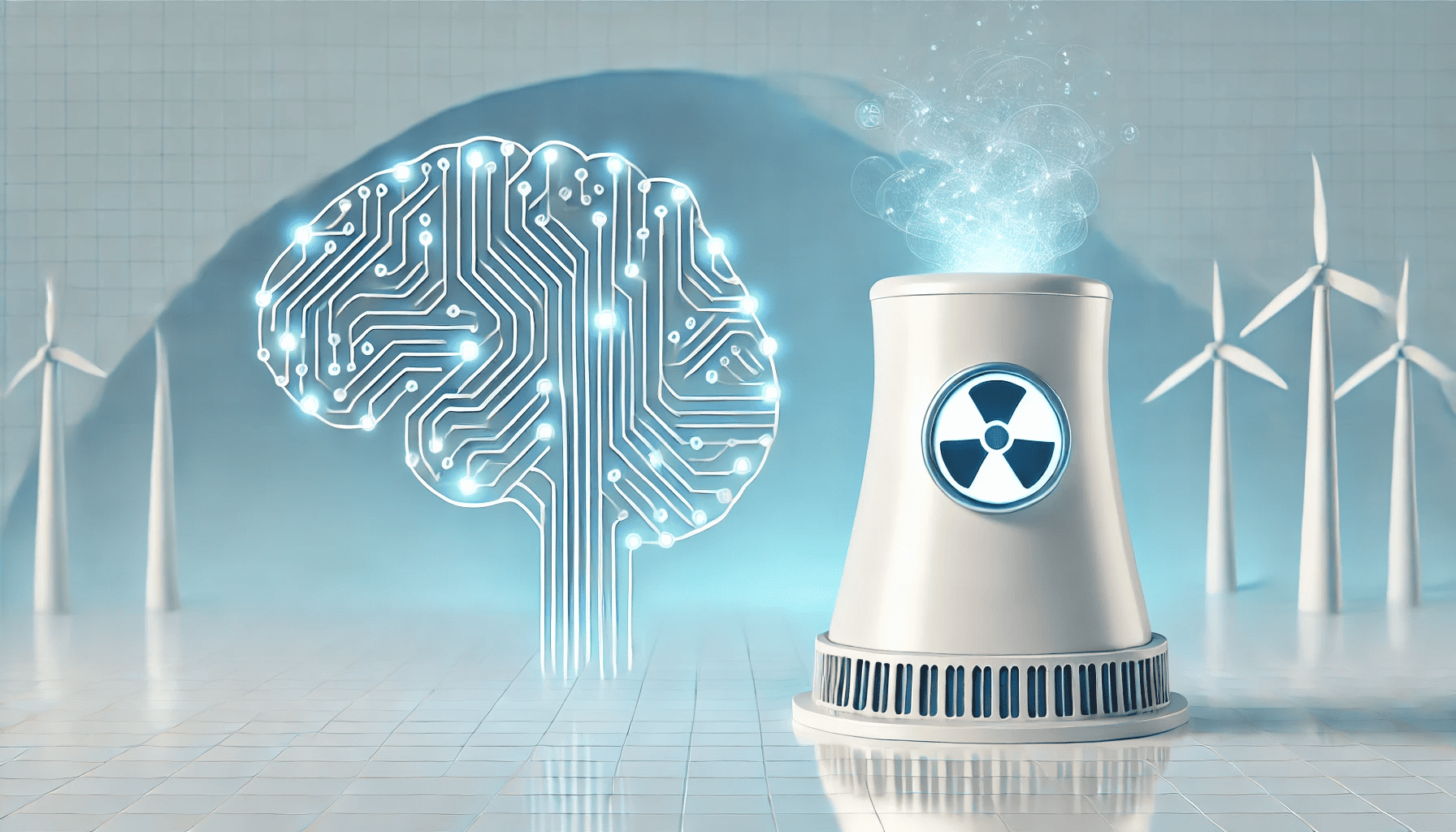U.S Uranium Stocks Surge: Nuclear Power Revival?
Recently, nuclear power has seen renewed interest in the U.S. stock market. In the era of AI, the construction of massive data centers is driving a surge in electricity demand. Traditional renewable s

Recently, nuclear power has seen renewed interest in the U.S. stock market. In the era of AI, the construction of massive data centers is driving a surge in electricity demand. Traditional renewable sources like wind and solar struggle to meet the long-duration, high-load demands of data centers due to their intermittent generation and high storage costs. Against this backdrop, nuclear energy—particularly Small Modular Reactor (SMR) technology—is being seen as a potential key solution to achieving both carbon neutrality and energy security.
Capital markets, always quick to react, have poured money into nuclear-related stocks. Numerous investment banks are now forecasting that nuclear power will secure a significantly larger share in the global energy mix by 2030.
However, this isn’t the first nuclear boom on Wall Street. Starting in the 1960s, the U.S. nuclear industry underwent rapid expansion. Hundreds of reactor projects were approved, and nuclear energy was once touted as making electricity “too cheap to meter.” During this period, nuclear power was not a fringe option but a central pillar of national industrial competitiveness and energy independence.
The turning point came in 1979 with the Three Mile Island accident. Although it caused no deaths, it had a profound psychological impact, making the public acutely aware of the risks of nuclear technology. Then came the 1986 Chernobyl disaster—the worst in history—which shattered public trust in nuclear power. The industry subsequently entered an era of extreme regulatory scrutiny. The 2011 Fukushima disaster further halted nuclear development worldwide for another decade.
However, safety concerns were only part of the story. The decline of the last nuclear boom was ultimately due to poor economics.
In the U.S., nuclear plants typically take over a decade to build, with frequent cost overruns. For example, Georgia’s Vogtle Units 3 and 4 were initially budgeted at $14 billion but ended up costing over $30 billion, with years of delays. With low natural gas prices and rapidly falling costs for wind and solar, nuclear power shifted from “energy savior” to “fiscal black hole.”
Nuclear waste management remains unresolved. The Yucca Mountain national repository has been stalled due to political opposition. Currently, high-level waste from active reactors is stored on-site with no long-term disposal solution, undermining nuclear’s claim to sustainability.
As a result, since the 1990s, the U.S. has barely built any new commercial nuclear projects. No new reactors were connected to the grid between 1996 and the early 2020s. Aging reactors have been retired, while new builds failed to keep pace. Nuclear still accounts for just 18–20% of U.S. electricity—a figure unchanged for four decades.

Have things improved today? Not really.
The only substantial shift is a move toward Small Modular Reactors (SMRs). This is the industry's key area of innovation.
SMRs typically have a capacity of 50–300 MWe, much smaller than traditional 1000+ MWe pressurized water reactors. In theory, this means smaller upfront investment, easier financing, and modular deployment. SMRs can generate cash flows earlier and appear more economically viable.
SMRs also aim to use factory-based prefabrication and modular construction rather than custom on-site builds. This industrial “replication” model seeks to reduce costs and construction time.
But in practice, no SMR has yet achieved commercial operation or delivered financial returns. NuScale, a leading listed SMR company, had planned to commission its first project by 2030—but it was canceled in 2023 after projected electricity costs rose to $89/MWh, higher than gas or solar-plus-storage alternatives. In short, savings from modular construction may be wiped out by diseconomies of scale.
Furthermore, SMR designs vary widely and lack standardization. Each design requires its own regulatory review, so permitting has not become faster. Crucially, the U.S. still lacks the industrial supply chain to support large-scale SMR deployment.
And SMRs still generate long-lived nuclear waste. Responsibilities are unclear, sunk costs and tail-end risks deter capital, and issues like decommissioning and waste storage haven’t been solved—they’ve just been decentralized.
Looking at the full picture, the fundamental problems that sank the last nuclear wave—cost, construction time, safety, and waste—remain unresolved.
Currently, most U.S. nuclear plant profits come from government subsidies or capacity market incentives. If political support fades or subsidies stop, operators could face major losses or even shutdowns. Given that U.S. electricity generation is largely handled by private firms, businesses that can’t turn a profit face major risks and won't attract long-term capital.
Therefore, the current narrative—“AI needs massive computing power → data centers consume huge energy → renewables are unstable → nuclear is the ultimate solution → SMRs deploy quickly → buy uranium stocks”—is fundamentally speculative. It lacks a sound long-term investment thesis.
That said, this doesn’t mean uranium lacks a long-term case. Global uranium production is highly concentrated, with key suppliers like Russia and Kazakhstan. U.S. domestic production nearly collapsed in the early 2020s, making the country heavily reliant on imports. The U.S. Department of Energy is now funding uranium mine restarts, but this revival is more about strategic security than nuclear power growth.
Disclaimer: The views in this article are from the original Creator and do not represent the views or position of Hawk Insight. The content of the article is for reference, communication and learning only, and does not constitute investment advice. If it involves copyright issues, please contact us for deletion.